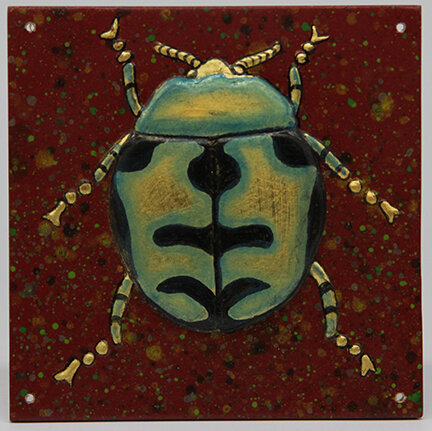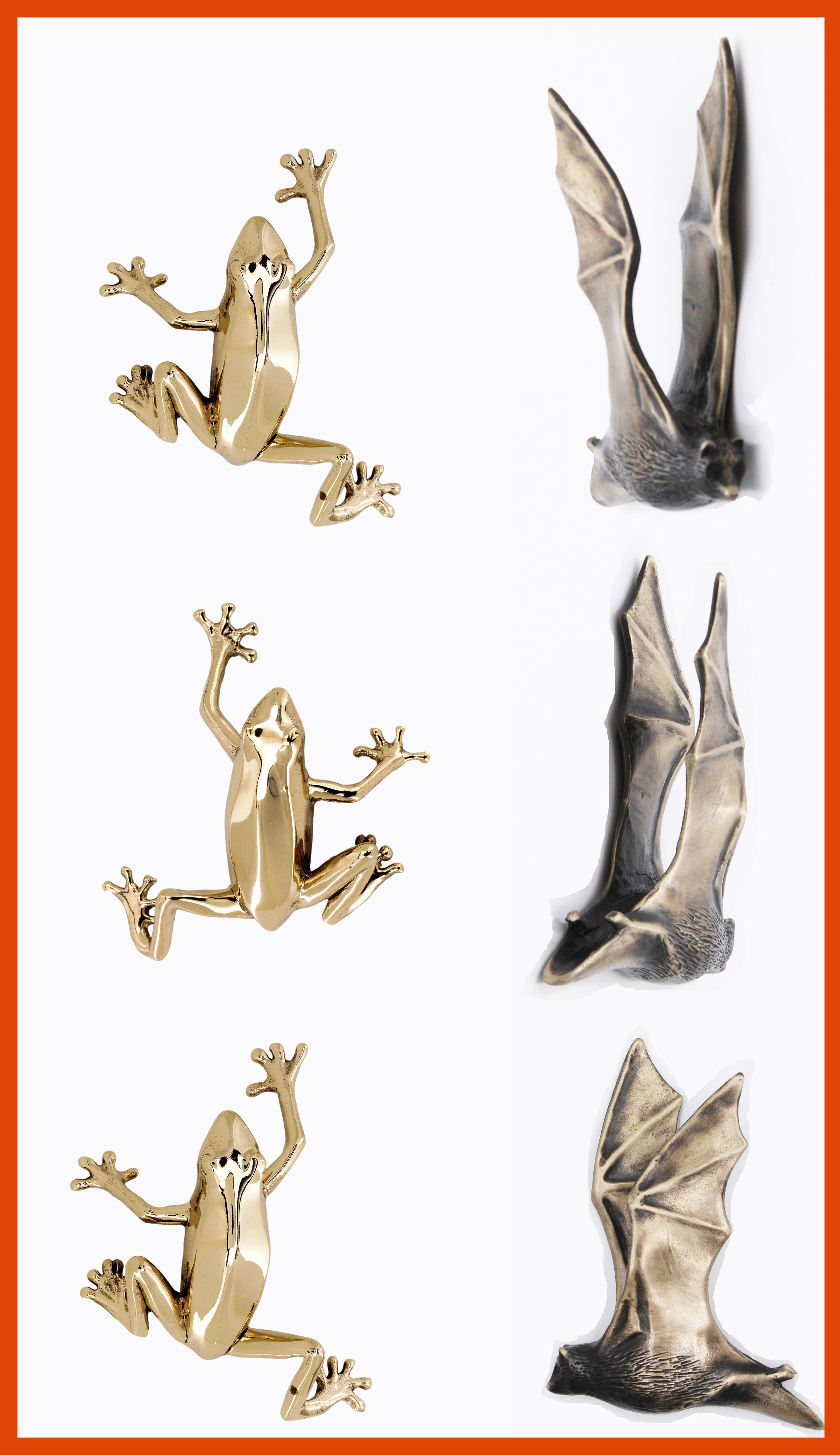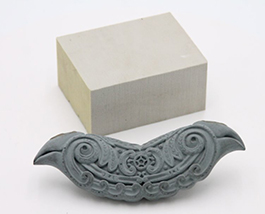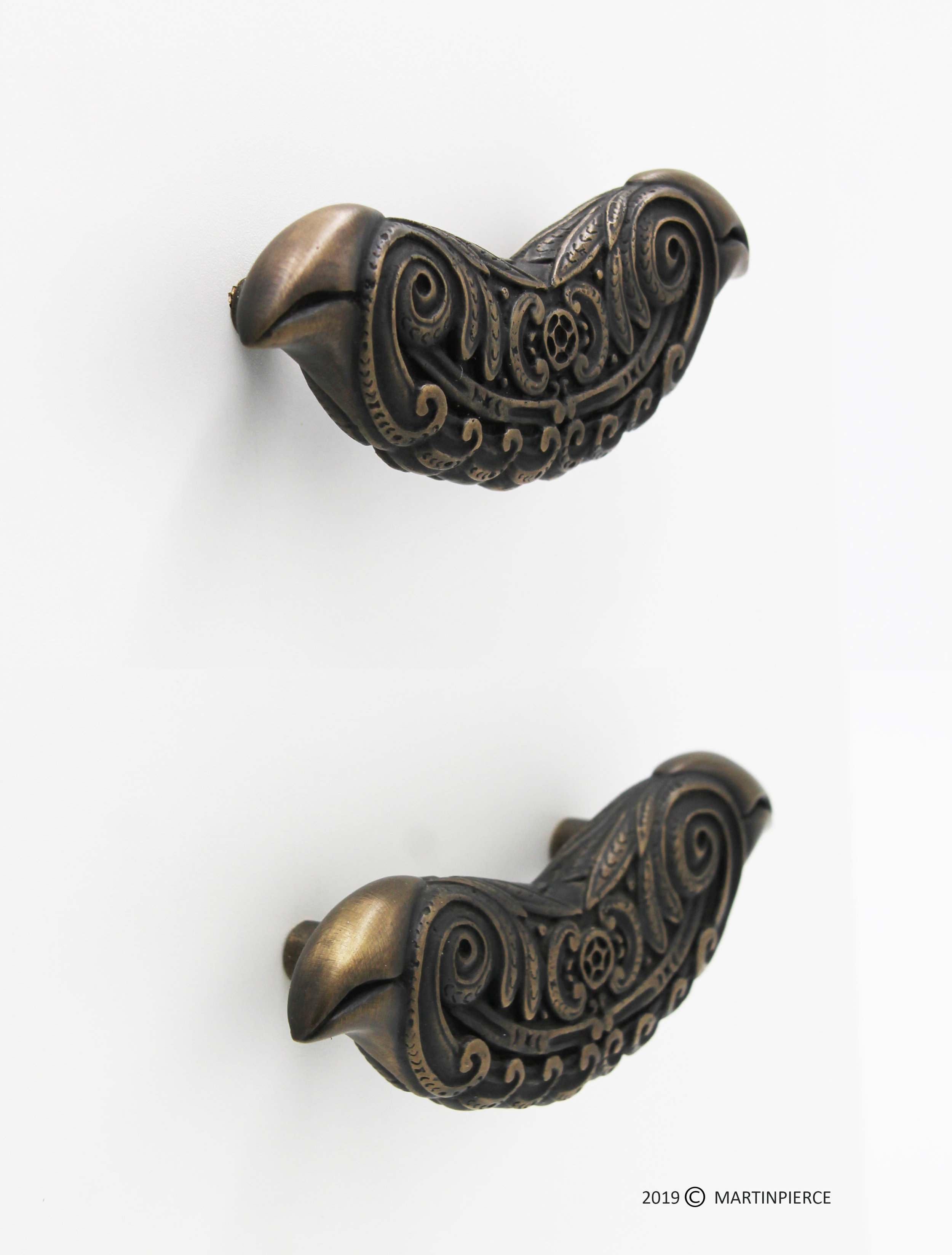Martin has now completed all 18 insect panels for our front door which will be hung soon following some minor repairs to the door which we suspect may be close to a 100 years old.
Continuing from my earlier post, the panels once gilded were sealed with a clear semi-gloss lacquer and the outline of the insects body and eyes were darkened with a glaze made from mixing a black UTC with a naphtha-like solvent which was applied with an extremely fine brush. Naphtha is a fast drying solvent and when mixed with oil based pigmented UTC’s dries very rapidly allowing successive layers of color to be built up. Each layer of colored glaze needs to be firmly sealed with a coat of lacquer before the next glaze is applied.
As the UTC pigments are essentially suspended in oil they are translucent and this allows the gold leaf to shine through creating an overall sense of iridescence.
Martin created the different glazes using the following UTC (Universal Coloring Tints) made by Chroma-Chem and typically only available through wholesales paint suppliers.
Green – Thalo Blue (824-7209) mixed with Light Yellow (824-2511)
Orange – Toluidine Red ( 824-0705) mixed with Light Yellow (824-2511)
Lamp Black – 824-9946
Titanium White – 824-0082
Once the panels were deemed complete Martin applied two final coats of semi-gloss lacquer to protect and seal the panels. The panels will be attached to the door with small round brass screws one in each corner.
While we do intend to be using these designs in forthcoming art pieces for those wanting to add a bug or two now to that special cabinet or room please do check out our animal and insect bronze cabinet pulls.
Insect art;animal cabinet pulls;insect cabinet pulls;custom cabinet knobs and pulls;





































